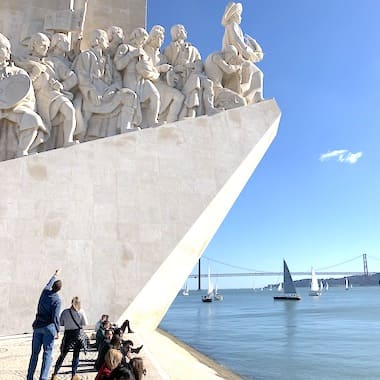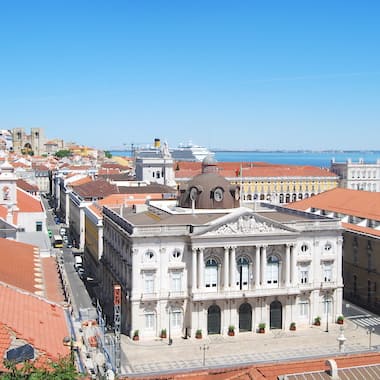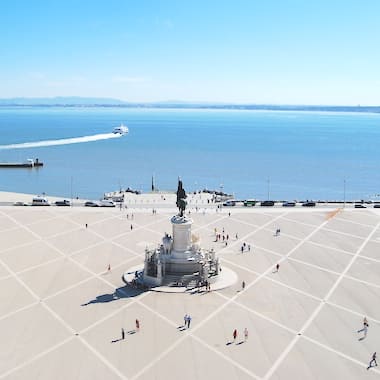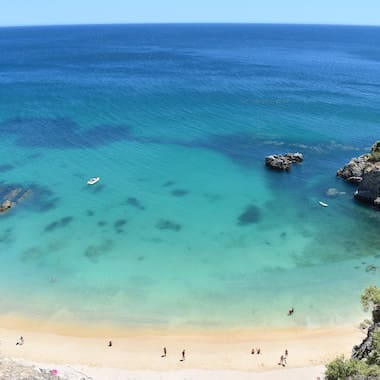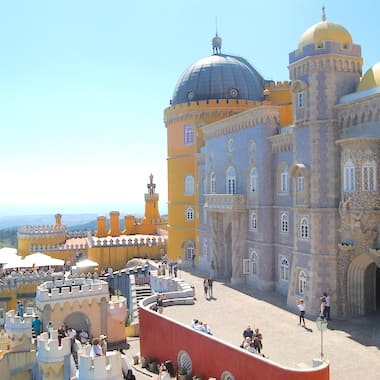How Many Days in Lisbon?
You should spend at least three days in Lisbon, but the city is also a great destination for an extended summer holiday. The “Age of Discovery” attractions of Belém take an entire day to explore, while another day could be split between Alfama and the Parque das Nações district, and a third should be set aside for a day trip to Sintra. A fourth or more days would allow you to head to the beach or enjoy a walk by the sea in Cascais, and explore alternative corners of the capital and museums of interest.
Lisbon is also a good base to discover other highlights of Portugal, such as Évora, Óbidos, or the fishing-villages-turned-surfing-meccas Ericeira and Nazaré.
When to Visit Lisbon?
Lisbon is a year-round destination, with warm summers and mild winters. Hot summer temperatures are cooled off by the Atlantic breeze, while in winter they never reach the freezing point. Although it’s known as a sunny city and for being the European capital with the mildest winters, it can also rain for days between November and April. Weather at that time of the year is quite unpredictable, but in the spring there may be downpours for one hour followed by clear skies and sun. Because many of Lisbon’s top attractions are outdoors (the viewpoints, beaches, and even the palace-hopping in Sintra), visiting in the wettest months may not be a good idea. The high tourist season is between June and early September, so the prices of accommodation go up at that time. Late May and mid-September may be the best times to visit, as temperatures are mild, it’s good enough for days at the beach, and the crowds are fewer. If you must visit in the summer, make sure you book accommodation well in advance.
10 Things You Should Know Before You Visit Lisbon
-
1. Lisbon is very hilly, but walks are rewarded with magnificent views at the top, from various “miradouros” (viewpoints). Each offers a different perspective, and miradouro-hopping is one of the city’s most memorable (and Instagram-worthy) experiences.
-
2. The coast around Lisbon has a variety of beautiful beaches. Some have the perfect waves for surfing, others have no waves at all, but they’re all clean and sandy. Some are crowded, others are wild and nearly deserted. If you’ll be in the city in the spring and summer months, try to prolong your stay for one or more days at the beach.
-
3. Lisbon is one of Europe’s oldest cities (it’s the second-oldest capital after Athens), but most of the center dates from the late 1700s. That’s because one of the worst recorded earthquakes destroyed most of it in 1755, and it had to be completely rebuilt. Only four central neighborhoods predate the disaster — the ancient Alfama and Mouraria below the castle, Madragoa close to the riverfront, and Bairro Alto, laid out in the early 1500s up on a hill. Wandering around these “bairros históricos” (historic neighborhoods or old quarters) is one of the city’s most rewarding experiences, especially if you love to photograph.
-
4. Lisbon started as a Phoenician trading port called Alis Ubbo (“Delightful Shore”), then became part of the Roman empire, before being taken over by the Visigoths and the Moors. When the new nation of Portugal was founded in 1139 in northern Iberia, the king decided to expand his territory and conquered the lands to the south, which included Lisbon, in 1147. It became the Portuguese capital in 1385, and ended up ruling a global empire in the “Age of Discovery” (15th and 16th centuries). The city’s most iconic landmarks date from this last period, including the Belém Tower and the Jerónimos Monastery, both World Heritage Sites and prime examples of Manueline architecture (a Portuguese late Gothic style).
-
5. To reach the top of the tallest hills, nothing can beat the good-old trams and funiculars. Lisbon preserves vintage vehicles with wooden interiors, and they go through some of the city’s most picturesque streets. The only disadvantage is that they’re public transportation, so are always crowded and can be uncomfortable if you don’t get a seat. Fortunately, there are now routes just for tourists, where you can always comfortably enjoy the ride and the views along the way: Lisbon tram tours
-
6. One of Lisbon’s most striking features is its use of decorative tiles (“azulejos”) to adorn entire façades. Those may be geometric patterns, solid colors or monumental murals. The tradition started in the 1700s, and is often still applied to modern buildings. Inside churches and palaces you’ll mostly see blue-and-white panels from the Baroque period, creating a distinct architecture that you won’t see anywhere else in the world.
-
7. Lisbon has become a major center for street art, with two big local names leaving their mark on the city -- Vhils (who sculpts faces on buildings) and Bordalo II (who creates art from trash). You’ll surely find their pieces as you walk around the city, together with works by foreign artists.
-
8. Lisbon is one of only a few cities in the world which developed its own musical style. Buenos Aires has its tango, New Orleans has jazz, Rio de Janeiro moves to samba, and Seville dances to flamenco, while Lisbon listens to fado. It’s mostly nostalgic and melancholic poems recited to the sound of guitars, but you don’t need to understand the words to feel the emotion of a performance. You may hear it at “casas de fado” (or “fado houses”), which are restaurants with live performances by professional or amateur singers, mostly in the neighborhoods of Alfama, Mouraria, and Bairro Alto.
-
9. A balmy climate invites the people of Lisbon to enjoy their nights on the streets. No weekend in the city is complete without bar-hopping in the neighborhoods of Bairro Alto and Cais do Sodré -- everyone buys a drink inside and stays chatting by the door or on the street, before moving to another bar to repeat the dose.
-
10. The younger generation in Lisbon speaks English quite well, so you won’t have a problem communicating. Still, learn a few basic words in Portuguese: “obrigado” is “thank you” (never use “gracias” — you’re not in Spain!), “bom dia” is “good morning”, “boa tarde” is "good afternoon," "boa noite" is “good evening/night,” and “fala inglês?” is “do you speak English?”

